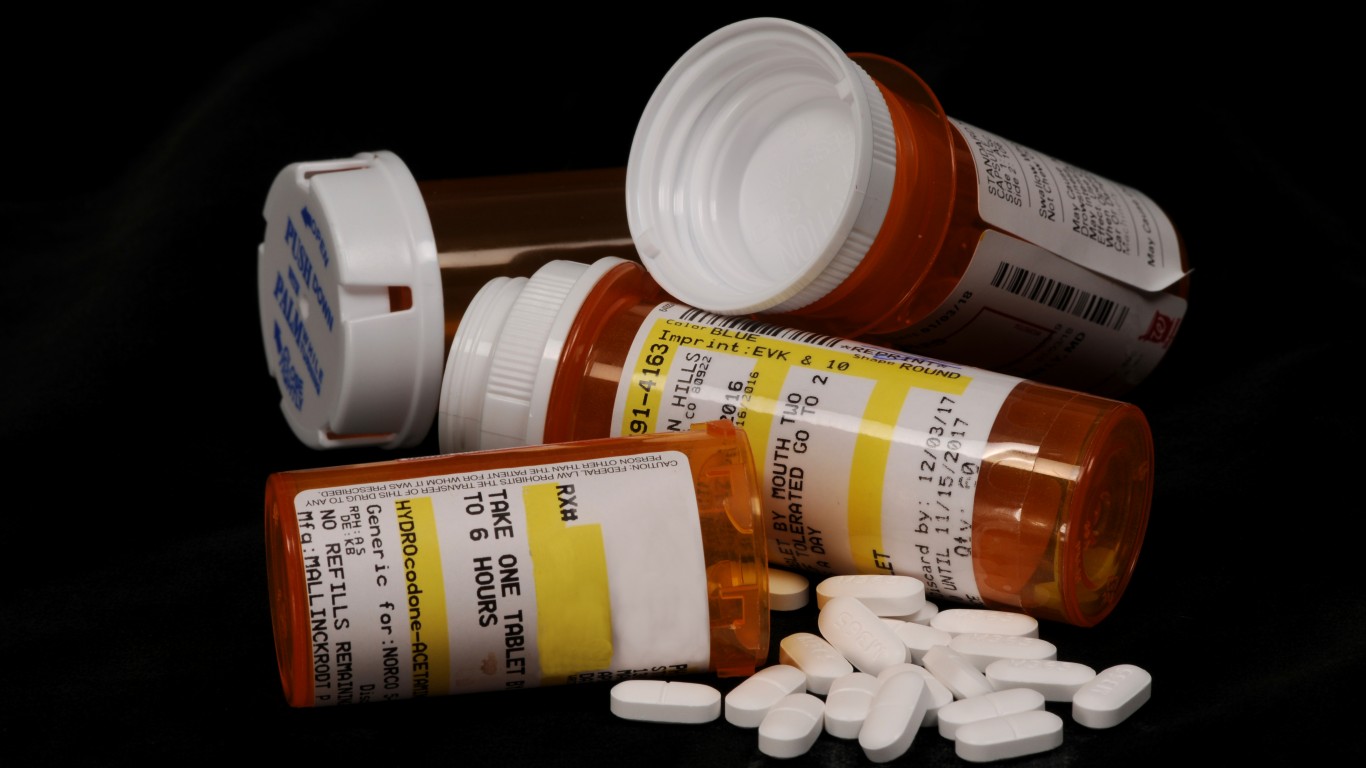Economy
Why Lost Jobs and Opioids Affected Coal Miners and Autoworkers Differently

Published:

In the five-year period following the closure of an automobile manufacturing plant, deaths from opioid abuse in areas affected by the closures rose by 85%, from 12 per 100,000 population in areas where auto plants remained open to more than 20 per 100,000.
Among areas hit by major losses in coal mining jobs, however, death rates from opioid abuse were 15% lower in 2016 than would have been projected based on coal-mining jobs and opioid-related deaths in 2011.
These are the results from two studies published in December, and they raise the question of why there would be such a wide difference between fired workers in two industries hit hard by job losses.
In a study published Monday, “Association Between Automotive Assembly Plant Closures and Opioid Overdose Mortality in the United States,” researchers compared opioid-related death rates in U.S. counties affected by an auto plant closure with counties in which auto manufacturing plants did not close. A total of 112 counties located in 30 commuting zones were included, of which 29 (10 commuting zones) experienced closures and 83 did not.
The 112 counties accounted for 2.7% of the total U.S. population between the ages of 18 and 65 (in 1999) and 3.4% of the total number of deaths from opioid overdose nationwide among this age group during the study period (1999 to 2016). By the second year after a plant closed, the mortality rate due to opioid overdoses in affected areas surpassed the mortality rate from overdoses in areas unaffected by plant closures. The gap reached its widest point five years after a plant closed, rising to 8.6 deaths per 100,000.
Non-Hispanic white men between the ages of 18 and 34 in the closure areas experienced the largest mortality increase over a five-year period, rising by 20.1 deaths per 100,000, while those between the ages of 35 and 65 saw an increase of 12.8 deaths per 100,000. Non-Hispanic white women (18 to 34 years old) experienced an increase of 6.4 deaths per 100,000, while changes in the mortality rate for older women in this demographic were not statistically significant.
The researchers commented: “Among younger non-Hispanic white men and women, the estimates implied larger increases in mortality from illicit opioid overdoses vs prescription opioid overdoses, while the opposite pattern was found for older non-Hispanic white men.”
The other study of opioid-related deaths published last month, “Abandoned by Coal, Swallowed by Opioids?” implies that the decline in U.S. coal mining, particularly underground mining, “may have a positive spillover in the form of reduced mortality from opioid use.”
The researchers combined county-level mortality data with mine-level coal production data to examine the relationship between opioid-related death rates and coal mining. They report: “Our results indicate that a lower dependency of the local economy on coal mining is associated with lower opioid death rates. Specifically, a one percent increase among the coal-producing counties in the share of coal miners in the workforce increases the opioid mortality by 0.192 percent. … [I]f coal mining activity in 2016 were at its 2011 peak level, the opioid death rate would have been fifteen percent higher.”
The results also suggest a reason for the lower opioid-related death rate: mining (particularly underground mining such as in much of Appalachia) leads to more workplace injuries that in turn lead to a “prevalence” of opioid painkillers and subsequent opioid abuse. The researchers also commented: “[A] higher share of coal miners among the total workforce also increases the opioid death rate of women, who seldom participate in mining activity.”
The authors of the auto industry study characterize their results this way: “[O]ur findings, combined with a growing body of research demonstrating adverse associations between trade-related industrial decline and drug overdose mortality, lend support to the view that the current opioid overdose crisis may be associated in part with the same structural changes to the US economy that have been responsible for worsening overall mortality among less-educated adults since the 1980s.”
That result, the researchers say, “should not be interpreted in such a way as to diminish the role of opioid supply, either from physician prescriptions or from illicitly made and supplied synthetic substances, in the US opioid overdose crisis.”
The auto industry study did not include an examination of underlying factors that could have contributed to opioid-related mortality. The study of coal miners did include such factors (high number of job-related injuries, the prevalent use of opioid painkillers). Eliminate the dangerous jobs and the number of injuries goes down. With a reduction in injuries, fewer prescriptions are written for opioid painkillers. And when prescriptions decline, opioid overdose deaths decline.
A lower mortality rate due to opioid overdoses among coal miners and older auto industry workers indicates that fewer prescriptions for opioid painkillers made a difference. Younger auto industry workers who lost their jobs turned to illicit opioids and synthetics like fentanyl. Many of the communities most affected by drug addiction and overdose death are low income, rural parts of the country — these are the counties with the worst drug problems in each state.
Retirement can be daunting, but it doesn’t need to be.
Imagine having an expert in your corner to help you with your financial goals. Someone to help you determine if you’re ahead, behind, or right on track. With SmartAsset, that’s not just a dream—it’s reality. This free tool connects you with pre-screened financial advisors who work in your best interests. It’s quick, it’s easy, so take the leap today and start planning smarter!
Don’t waste another minute; get started right here and help your retirement dreams become a retirement reality.
Thank you for reading! Have some feedback for us?
Contact the 24/7 Wall St. editorial team.